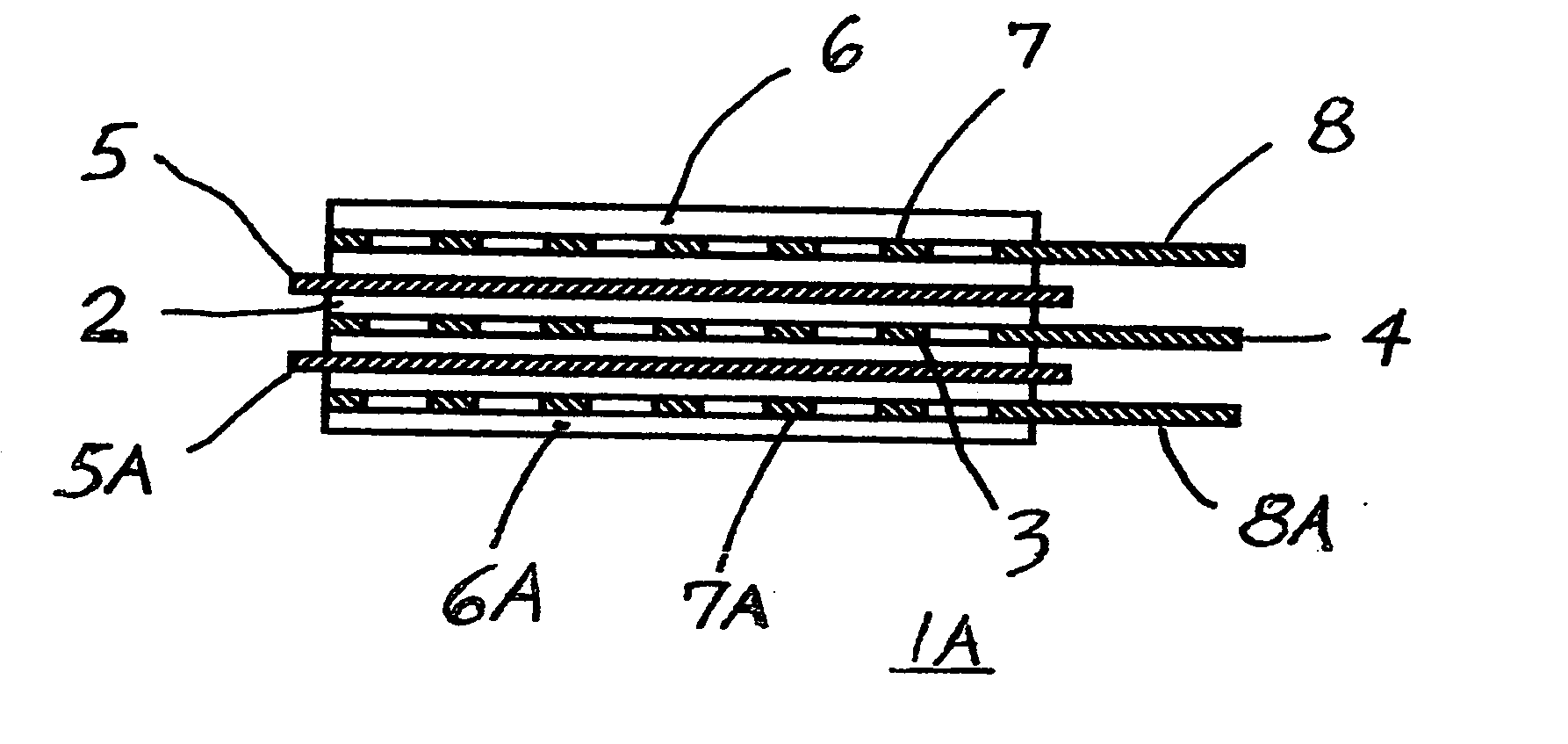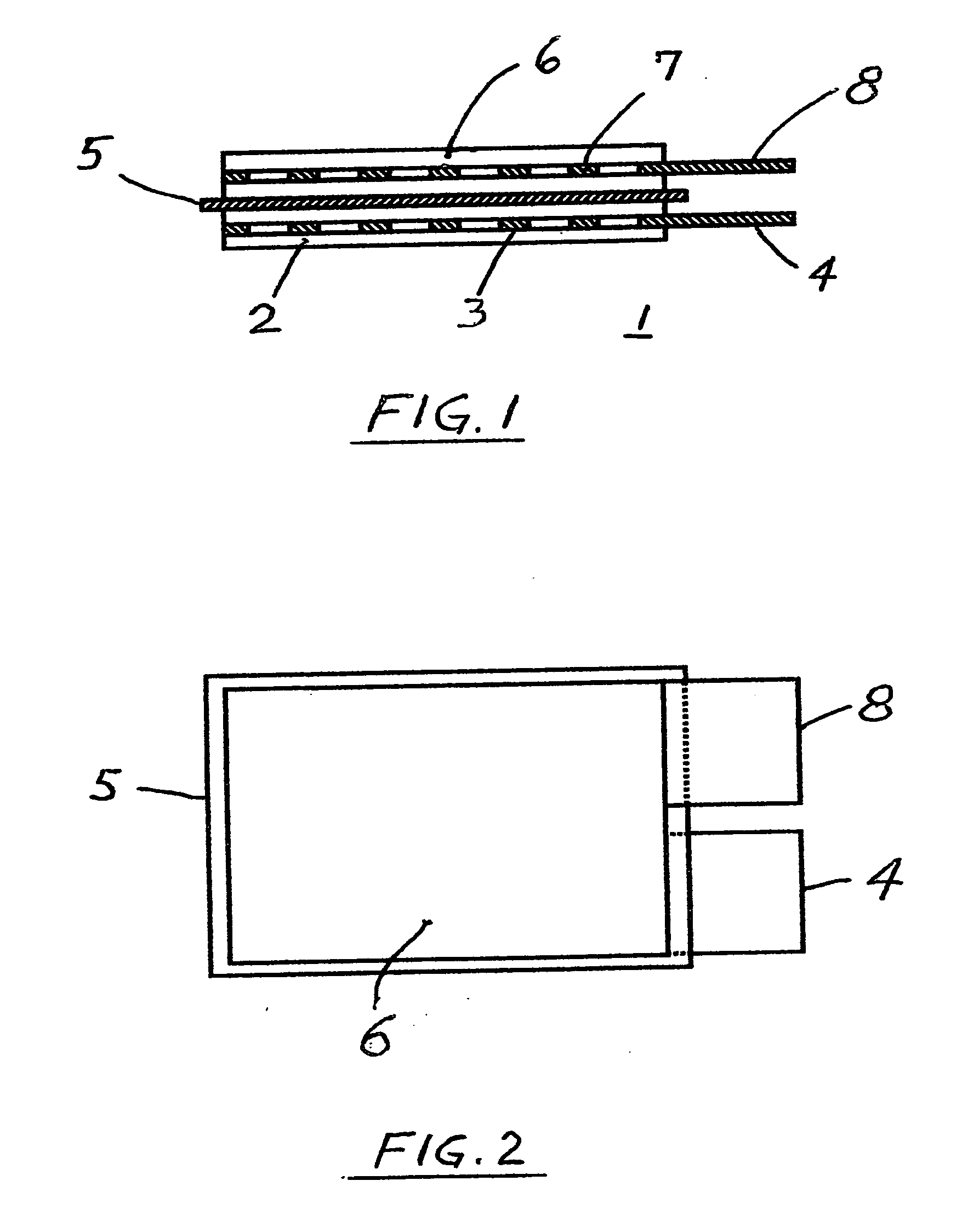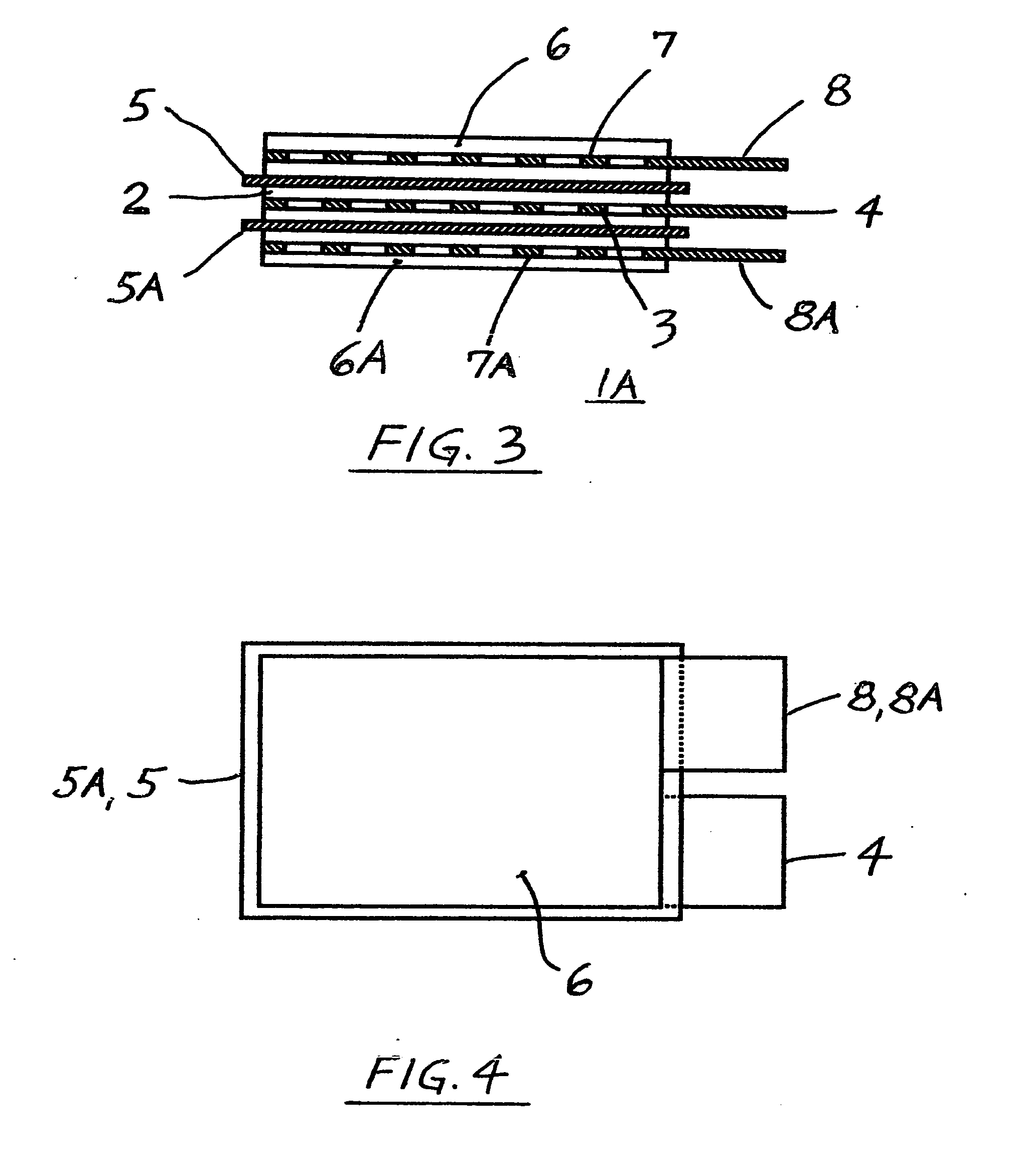Method of automated prismatic electrochemical cells production and method of the cell assembly and construction
a technology of prismatic electrochemical cells and assembly methods, which is applied in the direction of cell components, final product manufacturing, sustainable manufacturing/processing, etc., can solve the problems of reducing energy density, increasing cell resistance, and reducing energy density, so as to improve energy density, power density, and heat resistance. , the effect of improving the efficiency of the process
- Summary
- Abstract
- Description
- Claims
- Application Information
AI Technical Summary
Benefits of technology
Problems solved by technology
Method used
Image
Examples
example # 1 (
EXAMPLE #1 (NON-AQUEOUS BATTERY SINGLE CELL PREPARATION)
[0049] a. Several cathode current collectors were cut into section from aluminum expanded micro grid (Exmet Corp.), and surface treated by well known electrically conductive coating(Acheson EB-012). Cathode slurry of desired viscosity with PVDF homo polymer binder and without any plasticizer was prepared according to the same patent application, containing LiCoO2 as the active material, and a carbon. The current collectors were partially, vertically hand dipped into the slurry, then slowly pulled upward, suspended on a rack, and then vacuum dried in vacuum oven at approximately 100° C. for 2 hours.
[0050] b. Similarly, several anode current collectors were cut into sections from copper expanded micro grid (Exmet Corp.), surface treated, as described in our patent application Ser. No. 09 / 911,036, identically hand dip coated by anode slurry of desired viscosity and without any plasticizer, containing mesocarbon microbeads (MCMB) ...
example # 2 (
EXAMPLE #2 (NON-AGUEOUS BATTERY SINGLE CELL PREPARATION)
[0057] a. Metal microgrids of both electrodes, as described in the Example #1 were identically cut, treated and dip-coated, except at this time by well known plasticized active materials slurries of desired viscosity with PVDF / HFP binder as described in prior art patents, but the slurries contained propylene carbonate (PC) instead of the conventional dibutyl phalate (DBP). The coated grids were suspended and dried in air at room temperature, cut into identical sections, and calendared, as described in the Example #1.
[0058] b. Untreated, dry Gore Excellerator microporous PTFE separator, as described in the Example #1, step “d” was identically prepared.
[0059] c. The separator from the step “b” of this Example #2 was sandwiched between the plasticized, matching electrodes in overlying relation, as shown in FIGS. 1 and 2, and was heat welded and / or bonded to the electrodes, similarly as described in the Example #1, and without da...
example # 3 (
EXAMPLE #3 (ULTRACAPACITOR SINGLE CELL PREPARATION)
[0061] a. Several electrodes' current collectors were cut into sections from aluminum expanded micro grid (Exmet Corp.) and surface treated by well known electrically conductive coating as manufactured by Acheson. Electrodes' active coating slurry of desired viscosity with PVDF homo polymer binder and without any plasticizer was prepared as described in our patent application Ser. No. 09 / 911,036 for anode, except the MCMBs of the same % WT. were replaced by activated carbon obtained from TDA Research, Inc. The current collectors were partially, vertically hand dipped into the slurry, then slowly pulled upward, suspended on a rack and then vacuum dried for 2 hours.
[0062] b. All above electrodes were then cut into the same size section, (having uncoated terminal tabs as shown in FIG. 2), weighed and marked and kept in a group.
[0063] c. Untreated, dry Gore Excellerator, microporous 12 microns thin PTFE separator (as sold for use in l...
PUM
| Property | Measurement | Unit |
|---|---|---|
| boiling point | aaaaa | aaaaa |
| temperature | aaaaa | aaaaa |
| temperature | aaaaa | aaaaa |
Abstract
Description
Claims
Application Information
 Login to View More
Login to View More - R&D
- Intellectual Property
- Life Sciences
- Materials
- Tech Scout
- Unparalleled Data Quality
- Higher Quality Content
- 60% Fewer Hallucinations
Browse by: Latest US Patents, China's latest patents, Technical Efficacy Thesaurus, Application Domain, Technology Topic, Popular Technical Reports.
© 2025 PatSnap. All rights reserved.Legal|Privacy policy|Modern Slavery Act Transparency Statement|Sitemap|About US| Contact US: help@patsnap.com



